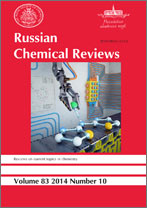|
This article is cited in 10 scientific papers (total in 10 papers)
Chemical problems of the infrared sensitisation of photographic materials
B. I. Shapiro
Research and Design Institute of the Chemical-Photographic Industry, Moscow, Moscow
Abstract:
The mechanisms of the spectral sensitisation of silver halides by infrachromatic dyes are examined. It is concluded that the effectiveness of the spectral sensitisation is determined by secondary dark oxidation reactions of the silver atoms formed — the so called dye self-desensitisation processes in which the infrachromatic dye plays the role of a catalyst — rather than by primary steps involving electron transfer from the photoexcited dye to AgHal. It is shown that processes involving the supersensitisation of infrared photographic materials constitute the inhibition of the dye self-desensitisation reactions. Supersensitisers are classified in terms of the inhibition mechanism as supersensitisers of the first and second kind. The application of supersensitisers of the first and second kind leads to a superadditive increase in light sensitivity. The modern supersensitisation methods have made it possible to develop a new generation of infrared films with improved photographic parameters. For example, the photosensitivity of an infrared film with a sensitisation maximum at 1060 nm has been increased by a factor of 100. The possibility of spectral sensitisation up to 1500 nm is demonstrated. The bibliography includes 147 references.
Received: 06.03.1996
Citation:
B. I. Shapiro, “Chemical problems of the infrared sensitisation of photographic materials”, Usp. Khim., 66:3 (1997), 278–304; Russian Chem. Reviews, 66:3 (1997), 255–279
Linking options:
https://www.mathnet.ru/eng/rcr1342https://doi.org/10.1070/RC1997v066n03ABEH000233 https://www.mathnet.ru/eng/rcr/v66/i3/p278
|


| Statistics & downloads: |
| Abstract page: | 90 |
|





 Contact us:
Contact us: Terms of Use
Terms of Use
 Registration to the website
Registration to the website Logotypes
Logotypes








